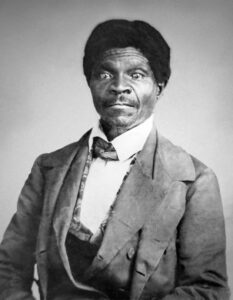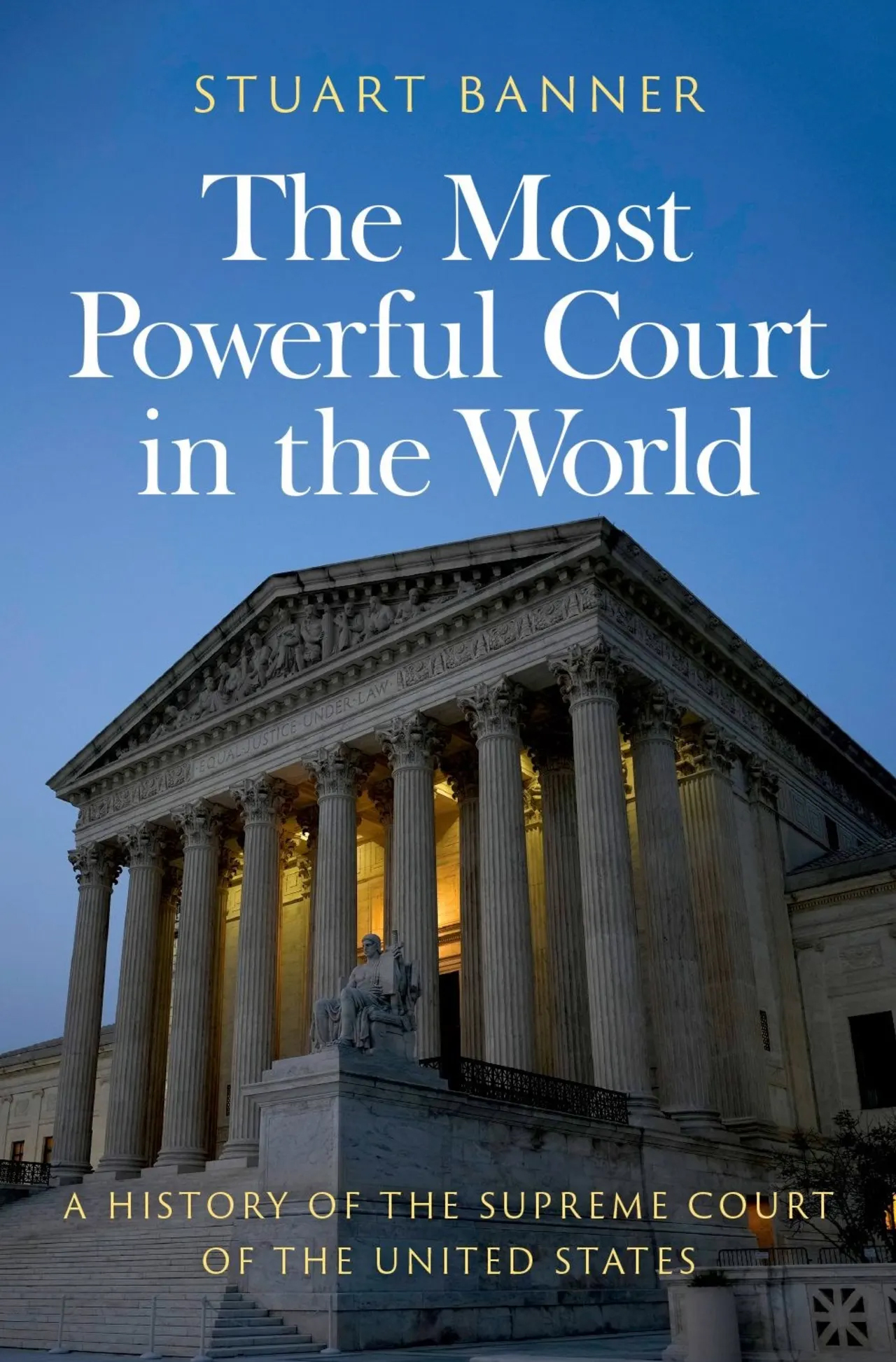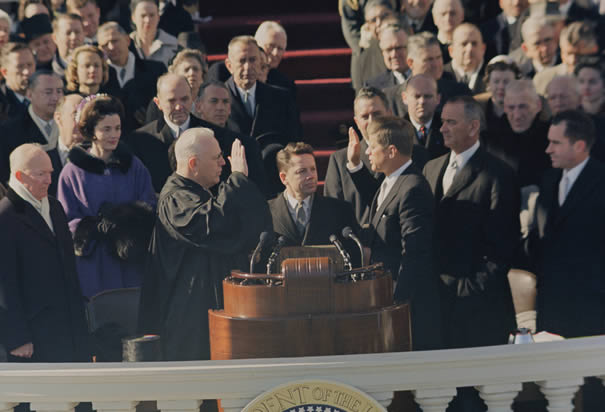 The Supreme Court’s decision was highly anticipated—and was leaked before the Court’s announcement. The Court would be ruling on the most contentious issue of the age, one that had threatened to tear the country apart for decades. When it was announced, one side hailed it as the final word on a divisive subject, finally laying the issue to rest. The other side exploded in moral outrage, charging the court with action far beyond its jurisdiction by trying to solve a complex and difficult political issue, overturning a long-standing precedent, and vowed to disregard the ruling and take the appeal directly to the American people.
The Supreme Court’s decision was highly anticipated—and was leaked before the Court’s announcement. The Court would be ruling on the most contentious issue of the age, one that had threatened to tear the country apart for decades. When it was announced, one side hailed it as the final word on a divisive subject, finally laying the issue to rest. The other side exploded in moral outrage, charging the court with action far beyond its jurisdiction by trying to solve a complex and difficult political issue, overturning a long-standing precedent, and vowed to disregard the ruling and take the appeal directly to the American people.
Sound familiar? It was March 6, 1857, and the case was Dred Scott v. Sanford. It has often been called by historians “the worst Supreme Court decision ever handed down.”
Dred Scott was an enslaved man who lived in Missouri (a slave state) with an Army surgeon, Dr. John Emerson. Emerson took Scott to the free state of Illinois and then on to the free territory of Wisconsin, where Scott married his wife, Harriet Robinson. Four years later they returned to Missouri with Emerson. After Emerson’s death, his widow refused to sell the Scotts their freedom. With the help of anti-slavery lawyers, Scott sued, claiming that his residence in Illinois and Wisconsin meant that he was free. The case worked its way through state courts. Mrs. Emerson eventually transferred Scott’s ownership to her brother, John Sanford, who lived in New York state, moving the suit into Federal jurisdiction. The case finally made its way to the Supreme Court, presided over by Chief Justice Roger Taney of Maryland.
Missouri applied for statehood in 1820 as a slave state, which would have upset the Congressional balance of power between free and slave states. Maine came in as a free state at the same time, but Congress, passing the Compromise, ruled that all future territories west of Missouri and north of Missouri’s southern border at latitude 36°30′ would be free. The Missouri Compromise had held for 37 years, even as the agitation over slavery in the western territories had fiercely divided the country.
The Taney Court, in a 7-2 decision, handed down its decision on March 6, just two days after pro-slavery Pennsylvania Democrat James Buchanan’s inauguration as the 15th president.
Taney could have ruled that Scott, being Black and enslaved, was not due his freedom and left it at that. But Taney went much further, ruling that Black Americans—whether enslaved or free—were not citizens, had never been citizens, and would never be, ignoring the precedent that African Americans were citizens in several states already. Not being citizens, he ruled, they had no standing to sue in any court in the United States and in fact had “no rights which any white man is bound to respect.”
Again, Taney and his majority could have stopped there. But Taney wanted to put an end to the acrimonious debates threatening to rend the Union asunder. He ruled that the Missouri Compromise of 1820 forbidding slavery in the western territories had been unconstitutional, that Congress never had the right to forbid or abolish slavery in any territory. Slavery followed the flag.
Associate Justice James Moore Wayne of Georgia played a large role in pushing the Court to go farther than simply issuing a narrow ruling. Hoping that the Court could do what politicians seemingly could not—settle the slavery question for good—Wayne was instrumental in persuading the Court to rule the Missouri Compromise unconstitutional, and his concurring opinion went farther in supporting Taney’s than any other justice’s.
The White South embraced the decision as an answered prayer while a storm of anger swept across the North. Georgia’s Robert Toombs bragged that he would call the roll of his slaves under Boston’s Bunker Hill Monument, while abolitionists exploded in outrage when they read newspaper headlines that boasted, “The Triumph of Slavery Complete.” Northern Free-Soilers and champions of popular sovereignty—the right of citizens in each territory to decide the issue for themselves—thought the ruling a blow against democracy. Ultimately the decision split the Democratic Party into irreconcilable factions while uniting the nascent Republican Party in opposition to what it considered an outrageous case of judicial overreach that had no moral validity and insulted freedom-loving Americans everywhere.
The decision proved to be a disaster for the Supreme Court and the proslavery advocates who celebrated it. The Court’s reputation was damaged, and far from quelling the slavery issue, the decision backfired, pushing the country ever closer to Civil War. That conflict did exactly what Taney had denied possible: It destroyed slavery and, through the Reconstruction amendments, made citizens of the formerly enslaved, in the process forever altering the relationship between the Federal government and the American people.
The Black struggle for full citizenship during the era of Emancipation and Reconstruction would lead to the great Civil Rights revolutions of the 20th century—and, ironically, the heavily politicized Dred Scott case helped pave the way.


 The Supreme Court’s decision was highly anticipated—and was leaked before the Court’s announcement. The Court would be ruling on the most contentious issue of the age, one that had threatened to tear the country apart for decades. When it was announced, one side hailed it as the final word on a divisive subject, finally laying the issue to rest. The other side exploded in moral outrage, charging the court with action far beyond its jurisdiction by trying to solve a complex and difficult political issue, overturning a long-standing precedent, and vowed to disregard the ruling and take the appeal directly to the American people.
The Supreme Court’s decision was highly anticipated—and was leaked before the Court’s announcement. The Court would be ruling on the most contentious issue of the age, one that had threatened to tear the country apart for decades. When it was announced, one side hailed it as the final word on a divisive subject, finally laying the issue to rest. The other side exploded in moral outrage, charging the court with action far beyond its jurisdiction by trying to solve a complex and difficult political issue, overturning a long-standing precedent, and vowed to disregard the ruling and take the appeal directly to the American people.